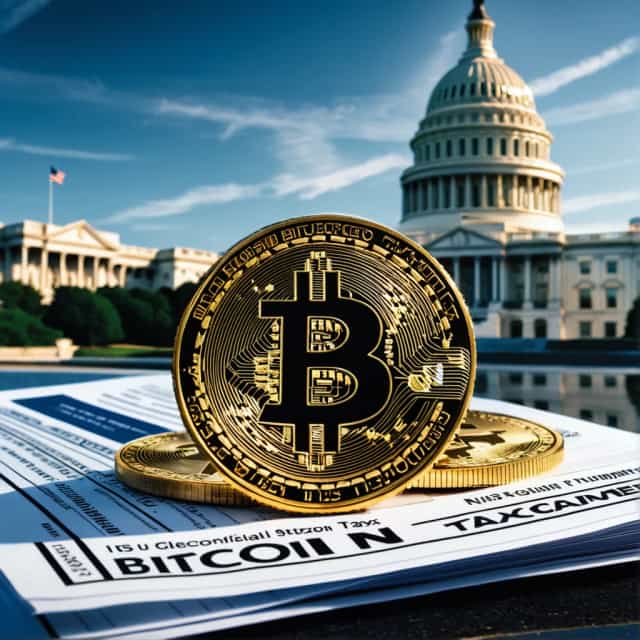
Image source: Block Media
U.S. Stocks Defy Government Shutdown Fears, Close Higher Amid Optimism
U.S. stock markets displayed resilience on October 1, with major indexes closing higher despite the looming uncertainty surrounding the federal government shutdown. The rally, led by pharmaceutical and biotech stocks, lifted the Dow Jones Industrial Average and the S&P 500 to new record highs, signaling investor optimism in the face of potential economic turbulence.
Dow and S&P 500 Set Record Highs Despite Early Market Nervousness
The Dow Jones Industrial Average rose by 0.09% to a historic close of 46,441.10, while the S&P 500 climbed 0.34% to 6,711.20, extending its record-breaking streak. The Nasdaq Composite, known for its heavy concentration of technology stocks, also advanced, gaining 0.42% to end the day at 22,755.16.
Initially, the markets opened lower as concerns about the impact of the government shutdown weighed on investor sentiment. However, a strong rally in pharmaceutical stocks, bolstered by positive corporate news, helped investors brush off initial pessimism, driving indices to all-time highs by the close.
Bonds and Dollar Show Weakness; Gold Hits Record High
In the bond market, weak labor data combined with shutdown anxieties fueled demand for safer assets. The 10-year Treasury yield fell by 5 basis points to 4.102%, marking a notable drop as investors sought refuge in government debt.
Meanwhile, the U.S. dollar softened, with the WSJ Dollar Index dipping 0.13% to 95.03. This weakness was partially offset by the rise in gold prices, which surged to historic levels. Gold futures surpassed $3,900 per ounce as investors flocked to safe-haven assets amid ongoing economic and political uncertainty.
Private Payroll Decline Adds to Data Worries
September employment numbers from the private sector fell short of expectations, highlighting labor market challenges. According to the ADP National Employment Report, private payrolls contracted by 32,000, significantly missing predictions for a 45,000-job increase.
Further complicating matters, the government shutdown is expected to delay the release of critical economic indicators, including the September jobs report and the Consumer Price Index (CPI). These delays have heightened market uncertainty around Federal Reserve policy, particularly regarding potential interest rate decisions in October. The prospect of postponed economic data led to a reduction in Treasury yields and a slight dip in the dollar by the end of trading.
Pharmaceutical and Biotech Stocks Shine, Driving Market Gains
The pharmaceutical and biotech sector emerged as the clear market leader for a second consecutive day, propelling broader indexes higher. Pfizer spearheaded the rally with a 6.8% jump following news of its three-year exemption from national security-related tariffs, granted in exchange for investments in U.S. operations and participation in the government’s "TrumpRx" drug distribution initiative.
Other major players in the sector saw substantial gains as well. Merck surged 7.4%, while Eli Lilly soared 8.2%, highlighting the widespread optimism within the industry.
This strength extended globally, boosting markets in Europe and the U.K. The FTSE 100 in London and the STOXX 600 in Europe reached record highs, fueled by rallies in top pharmaceutical firms such as AstraZeneca, Novartis, and Sanofi.
ETF Market on Track for Record-Breaking Inflows
The exchange-traded fund (ETF) market continues to attract significant investor interest in 2023. U.S.-listed ETFs have recorded net inflows of $917 billion through the end of September, according to data from FactSet. If this pace continues, 2023 will mark the sector’s second consecutive record-breaking year for inflows.
Leading the ETF market are top-performing funds such as Vanguard’s S&P 500 ETF (VOO), BlackRock’s iShares Core S&P 500 ETF (IVV), and State Street’s SPDR S&P 500 ETF. Collectively, these funds have drawn an impressive $140 billion in capital year-to-date.
Market Outlook: Shutdown Seen as Temporary Noise
While the government shutdown has created short-term uncertainty, experts believe the broader economic trajectory remains stable. Larry Adam, Chief Investment Officer at Raymond James, commented, “The shutdown serves as a short-term noise factor rather than a trend disruptor.” He emphasized that concerns over economic slowdown and corporate earnings appear balanced for now.
Market participants are closely watching for updates on delayed employment and inflation data, as these reports could influence Federal Reserve decisions on future rate cuts. Despite the near-term noise, the overall sentiment remains cautiously optimistic about the market’s underlying strength.
In summary, while the government shutdown has introduced temporary volatility, robust gains in the pharmaceutical sector, coupled with strong ETF inflows, underscore investors’ confidence in the long-term growth of the U.S. economy.










